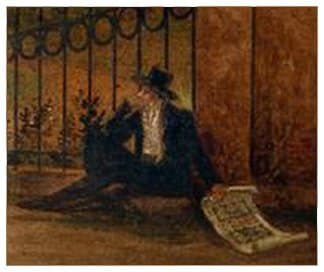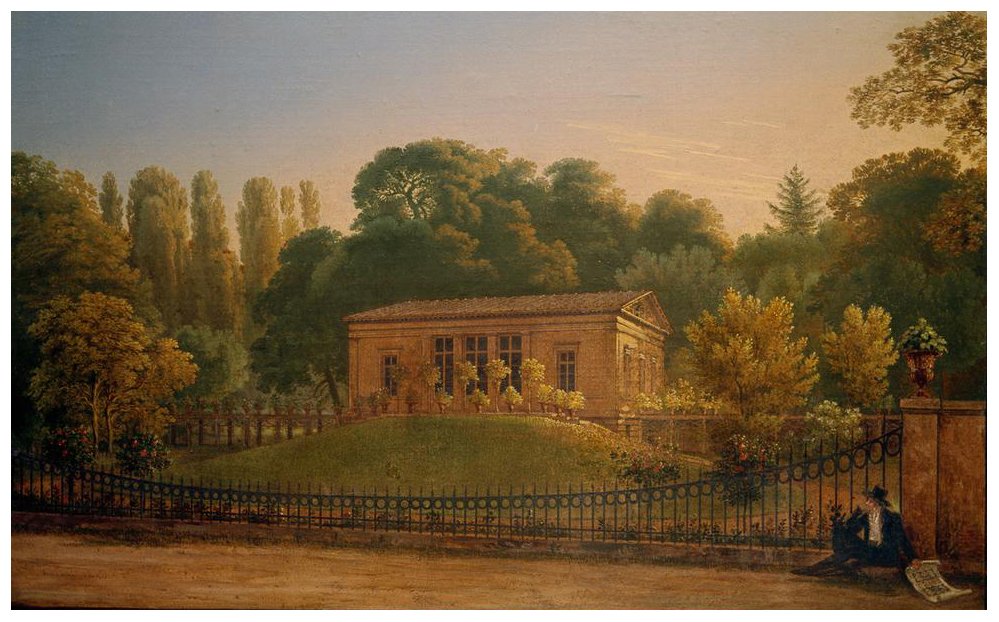Schinkel

Schinkel’s architecture is of a piece with his life, yet in various ways, by picturing and publishing the work, he took himself out of it. He wanted to make sure that his architecture could stand on its own, however deeply it had been a part of him. He was, in a word, living the life of a modern artist. His close friend and biographer Gustav Friedrich Waagen recognized a more obvious rift in Schinkel’s life, and put it thus: “From 1816 onward there was a split between the businessman burdened by his papers and the liberal artist whose enthusiasm was soon overwhelmed by the conscientious conduct of his office.”[1] The familiar conflict between official duties and artistic liberty, between inhibition and the spontaneous affirmation of an inner spring – goes much deeper and exists inside the work itself as a motif of separation, of detachment, sometimes even painfully sharpened to an intimation of loss.

Schinkel often affirmed that one is already “half-dead when not engaged in something new” or truly alive only when the imagination guides the hand, not when professional routine forces it. The distinction between the ‘artist’ and the ‘businessman’ parallels, perhaps even prefigures the separation between productive imagination and its objective detachment from the artist. However painful the experience may be, it is not only unavoidable but also necessary: it is necessary above all for the work, which needs to achieve independence from its own genesis; it can reach that status only at the price of having to survive on its own terms. From the high point at which a project reaches its completion, when it is most intensely charged with intuition, intelligence, and competence, the work is handed over to others. Schinkel did not let things rest there, but actively sought to set his architecture on a path to independence – an independence that respected such a degree of selfhood in his buildings that he accompanied them with alternate versions and with commentaries that imply, even anticipate, future change. As an oeuvre complete, his Sammlung architectonischer Entwürfe both records the vagaries of his professional life and transcribes them into an itinerary that, as a consequence, acquires the coherence of a record. The Sammlung preserves unbuilt works and variants of executed ones, but it also excludes a considerable number of projects that survive only on paper or without having ever reached a clear definition. These revenants of his imagination put in an occasional appearance in his paintings, because although they are not dead or forgotten, they were not sanctioned by inclusion in Schinkel’s Sammlung. Perhaps none of these images goes further in acknowledging the separation between author and work than one Schinkel painted of an unbuilt house, an idea that neither the client nor the architect could ever fully claim as his own. The house was to be a suburban retreat for his friend and client Georg Abraham Gabain. As a struggling young man, Schinkel had been living in a house owned by Gabain and his wife Caroline Henriette Augustine (née Gropius), whose brother employed him for his successful optical-perspectival displays.[2] In a small oil painting on paper, Schinkel included himself, like Lazarus in the Gospel of St. John, outside the wealthy man’s house. He squats on the sidewalk holding a plan of the house, and from the right-hand foreground looks wistfully across a cast-iron fence toward the summerhouse. Descending in a slow curve, the fence’s sinking profile contrasts with the gently rising berm that leads to the main floor of the house. Shaped as a spare but true temple of habitation with tall windows giving onto the garden, Gabain’s house would have been beautifully framed by copses of trees, as if they had been herded together from a far more spacious setting in order to form a protective enclosure for the residence. It is connected to the street by an oval pathway leading behind the oval rise of the berm, and set off by fence posts that form an oval lower fringe as if the hem of a theatrical curtain were falling over the crepuscular scene. Schinkel had a keen eye for fences, remarking on them in England where they were much in vogue.[3] In Edinburgh, he sketched one of the longest fences, which in his album runs across the entire page and separates a strolling family from the impressive panorama of the city rising to its rocky heights.

The Gabain house in Schinkel’s painting appears to be in a dormant state – no sign of life from the inside, while a ripe silence pervades the vegetation outside. The scene is under the spell of a melancholy farewell at the witching hour. The architect, excluded as he is from the property, beholds the mirage of a work as if he had fallen upon it during an absent-minded stroll. Yet he holds the key (in the form of the drawing) to a phantom that lives only in his imagination. The house remains a vagrant dream, abandoned by its dreamer. It is impossible to decide whether the architect is on the scene to mourn a loss or indulge in a daydream, recovering a work that survived in his mind, and now craves existence as an effigy.
This excerpt celebrates the publication of Kurt Forster’s Schinkel: A Meander through his Life and Work, published by Birkhäuser and which can be found here.
Notes
- “Namentlich vom Jahre 1816 an, tritt die eigentliche Epoche seiner großen Wirksamkeit als Architekt, zugleich aber auch die Theilung seiner Kräfte zwischen dem von Akten geplagten Geschäftsmann und dem frei schaffenden Künstler ein, welche dieselben bei seiner Gewissenenhaftigkeit als Geschäftsmann, bei seiner Begeisterung als Künstler bald überm..ig in Anspruch nahm,” Gustav Friedrich Waagen, “Karl Friedrich Schinkel als Mensch und als Künstler,” in Berliner Kalender auf das Schalt-Jahr 1844 (Berlin: Preußische Kalender Deputation, 1844), quoted after Die erste Biografie Schinkels im Berliner Kalender von 1844, ed. Werner Gabler, reprint. ed. (Düsseldorf: Werner, 1980), p. 351.
- During his English journey (1826), Schinkel sent his letters to his wife in Berlin in care of Gabain, whose wife seems to have received the painting from Schinkel, probably after Gabain had decided to abandon the project and acquired instead a house on the edge of the Tiergarten designed by Friedrich Gilly, Schinkel’s early mentor and life-long Vorbild – a concatenation of motifs with a powerful sense of preterition; see Karl Friedrich Schinkel. Architektur, Malerei, Kunstgewerbe, Helmut Börsch-Supan and Lucius Griesebach, eds., exh. cat. (Berlin: Nicolai, 1981), 1981, p. 257.
- He also prepared two plates of designs for cast-iron fences in the Vorbilder für Fabrikanten und Handwerker (Berlin: Technische Gewerbedeputation, 1831), Abteilung I, Plates 28 and 29.

– Basile Baudez